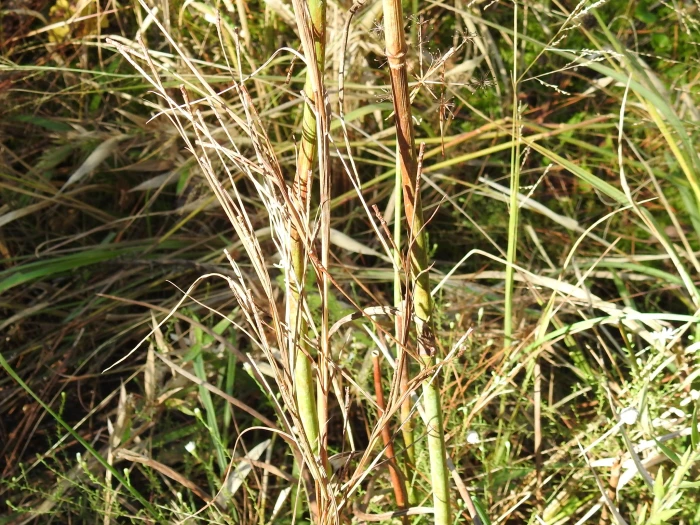Lopsided Indian Grass
(Rottboellia rugosa)
Lopsided Indian Grass (Rottboellia rugosa)
/
/

Sam Kieschnick
CC BY 4.0
Image By:
Sam Kieschnick
Recorded By:
Copyright:
CC BY 4.0
Copyright Notice:
Photo by: Sam Kieschnick | License Type: CC BY 4.0 | License URL: http://creativecommons.org/licenses/by/4.0/ | Rights Holder: Sam Kieschnick | Publisher: iNaturalist | Date Created: 2019-11-16T11:09:34-08:00 |

























Estimated Native Range
Climate Requirements for Dickinson, North Dakota
| This Plant | Your Site | Plant Suitability for Your Location | ||
|---|---|---|---|---|
| • Precipitation | 41" - 66" | 17" | Your precipitation may be insufficient for this plant. Irrigate N" / year. | Irrigate N" / year |
| • High Temp. | 84°F - 95°F | 85°F | Your summer temperatures are normal for this plant. | Excellent |
| • Low Temp. | 25°F - 63°F | 2°F | Your winter temperatures may be too cold for this plant | Too cold |
This plant should grow well at your location with about N inches per year (Y minutes per month) of irrigation.
Summary
Sorghastrum secundum, commonly known as lopsided indian grass or wrinkled jointgrass, is a perennial grass native to southeastern United States. It thrives in a variety of habitats including savannas, grasslands, and disturbed areas such as roadsides and fallow fields. This species typically grows rapidly to a height of 1.5-4 feet (0.46-1.2 meters) and is characterized by its tufted habit and erect stems. The flowers of Rottboellia rugosa are green and inconspicuous, blooming in the summer, and are less significant compared to its foliage.
Lopsided Indian grass is valued for its ability to establish quickly in warm climates, making it useful for soil stabilization and as a cover crop in agricultural settings. It is also used in traditional medicine in some cultures. In cultivation, it requires full sun exposure and performs best in medium or fast-draining clay, loam, or sandy soils, with medium water requirements. While it is not typically grown for ornamental purposes, it can be used in naturalistic plantings or as a low-maintenance grass in warm regions. Care should be taken as it can become invasive outside its native range, potentially outcompeting native vegetation.CC BY-SA 4.0
Lopsided Indian grass is valued for its ability to establish quickly in warm climates, making it useful for soil stabilization and as a cover crop in agricultural settings. It is also used in traditional medicine in some cultures. In cultivation, it requires full sun exposure and performs best in medium or fast-draining clay, loam, or sandy soils, with medium water requirements. While it is not typically grown for ornamental purposes, it can be used in naturalistic plantings or as a low-maintenance grass in warm regions. Care should be taken as it can become invasive outside its native range, potentially outcompeting native vegetation.CC BY-SA 4.0
Plant Description
- Plant Type: Grass
- Height: 1.5-4 feet
- Width: 2-3 feet
- Growth Rate: Rapid
- Flower Color: N/A
- Flowering Season: Summer
- Leaf Retention: Deciduous
Growth Requirements
- Sun: Full Sun
- Water: Medium
- Drainage: Fast, Medium
Common Uses
Erosion Control, Low Maintenance
Natural Habitat
Southeastern United States, thriving in savannas, grasslands, and disturbed areas
Other Names
Common Names: Wrinkled jointgrass
Scientific Names: Sorghastrum secundum , Rottboellia rugosa , Coelorachis corrugata , Coelorachis rugosa , Hemarthria rugosa , Manisuris chapmanii , Manisuris corrugata , Manisuris rugosa , Manisuris rugosa var. chapmanii , Mnesithea rugosa
GBIF Accepted Name: Rottboellia rugosa